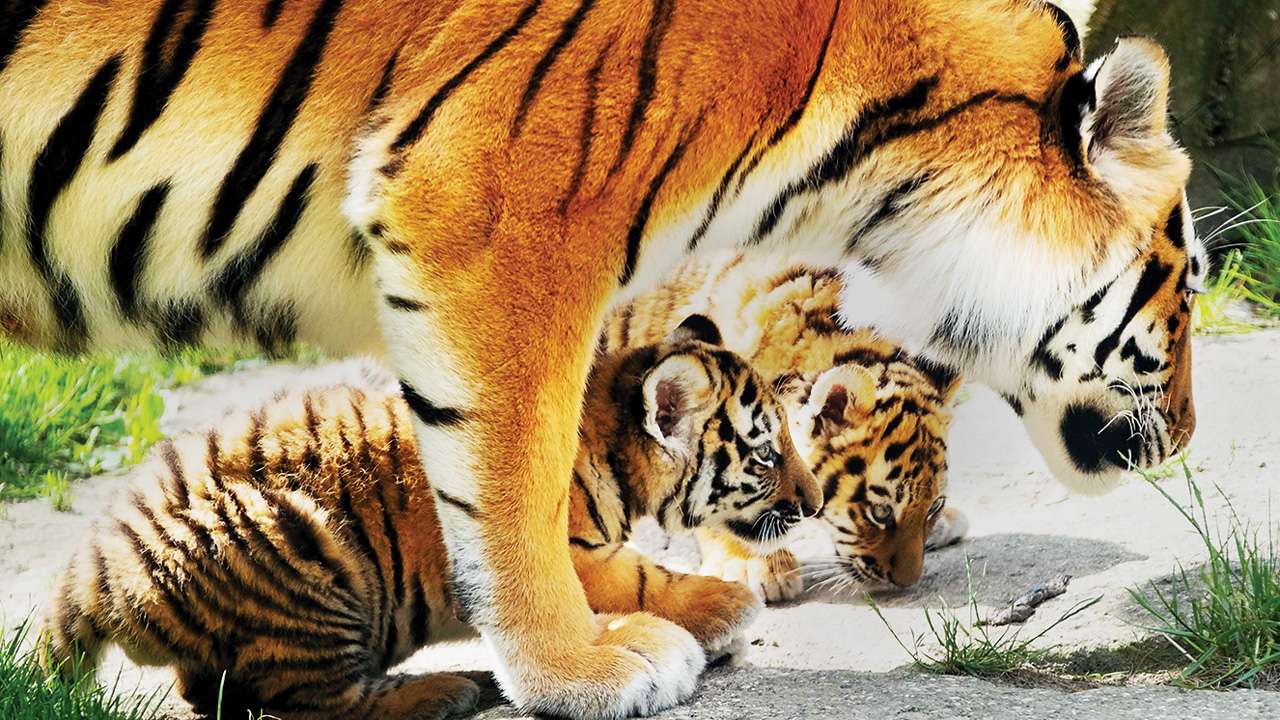
To boost the number of striped big cats at Sahyadri tiger reserve (STR), the state forest department has rolled out a two-forked plan to expand their prey base by developing meadows and translocating herbivores to the habitat.
Developing the landscape would ensure availability of more food for ungulates like sambar and spotted deer, boosting their numbers and, in turn, those of the tigers that feed on them.
At present the reserve, which covers the Koyna wildlife sanctuary and Chandoli national park, suffers from lack of breeding tigers and a poor prey base.
LOW-INTENSITY RESERVE |
|
Officials said they were also working on a plan to shift herbivores from Sagareshwar wildlife sanctuary and Katraj zoo in Pune to STR.
Satyajeet Gurjar, chief conservator of forests (CCF), Sahyadri tiger reserve, said they had undertaken meadow development on around 2,000 hectare of land.
"Tigers will migrate to the landscape only when the herbivore population is significant," he said. The plan includes plantation of fruit-bearing trees and raising availability of water, he said.
The forest department and the Wildlife Institute of India (WII) are working on a tiger recovery project to boost tiger numbers in the reserve.
The augmentation can be done by shifting the big cats from congested habitats like Bramhapuri and Chandrapur districts in Vidarbha.
But this depends on their genetic compatibility and ability to acclimatise to hilly and undulating terrain.
Once completed, this would become the first such tiger relocation in the wild in Maharashtra.
It will evaluate the feasibility of ecologically unsustainable projects in the landscape like mining and windmills, which affect the movement of carnivores from source populations down south and suggest measures for strengthening tiger corridors.
Tiger translocation has helped enhance tiger population in reserves like Panna and Sariska, where poaching had wiped them off. Cambodia, where tigers are extinct, has sought India's help to reintroduce them.
"We are working on shifting ungulates to the STR from around two to three sites like Sagareshwar and the Katraj zoo. They will be released in a planned manner. Before translocating tigers here, the herbivore numbers need to be healthy. Otherwise, this may cause conflict between them and local villagers," another official explained.
The release will cover healthy breeding animals, which will be released into the wild after a "soft-release" in cages at Zolambe in Chandoli. Around 50 such herbivores will be released in a year.
The 1,165.56-sq km STR includes a 600.12 sq km core and 565.45 sq km buffer in Satara, Sangli, Kolhapur and Ratnagiri. According to the 2014 tiger census, the STR has between 5-8 tigers based on scat DNA and model-based predictions, making it a low-intensity tiger reserve. However, these are not resident, breeding cats, but intermittent visitors.
Activities like bauxite mining in Kolhapur affected the STR's connectivity to source populations and habitats from source populations down south like Karnataka's Kali tiger reserve.
The forest department is proposing a wildlife sanctuary at Tillari in Sindhudurg to serve as a source population for the reserve, but officials admitted that the plan was being stonewalled by local plantation owners.
The department is also eager to demarcate the Radhanagari sanctuary as a satellite core for Sahyadri tiger reserve.
Maharashtra has six tiger reserves. The 2014 census said India has 2,226 tigers, up from 1,706 in 2010. Maharashtra has around 190 such big cats, more than the figure of 169 in 2010. The 2018 tiger census has estimated 312 tigers in the state.